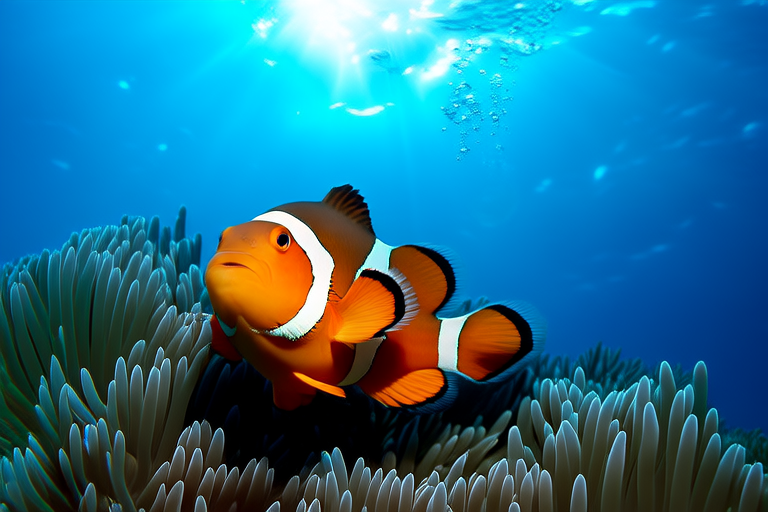Clownfish Care Made Simple: Tips for Happy and Healthy Pets
Welcome to the fascinating world of clownfish care! Whether you’re an experienced aquarist or just starting out, this guide will help you understand what it takes to keep these vibrant and charming fish healthy and happy in your home aquarium. Clownfish are popular choices for many hobbyists due to their striking appearance and engaging personalities, but they require specific care to thrive. This article will walk you through setting up the perfect habitat, maintaining ideal water conditions, feeding them properly, choosing suitable tank mates, addressing common health issues, and providing regular maintenance tips. Let’s dive right in!
Research Before You Buy
Before bringing home your first clownfish, take some time to learn about their needs. Understanding what makes them tick will ensure that you provide them with the best possible environment from day one. Research different species of clownfish, as each has its own unique requirements. Some species may be more sensitive than others when it comes to water quality or dietary preferences.
Additionally, consider consulting with experienced aquarists or visiting local pet stores where knowledgeable staff can offer valuable insights based on firsthand experience. Remember that while online forums and communities can provide useful advice, nothing beats face-to-face interaction with someone who knows their stuff.
Habitat Setup
Setting up a proper habitat is crucial for keeping your clownfish healthy and stress-free. Start by selecting an appropriate tank size – at least 30 gallons for a single pair or trio of clownfish. Larger tanks allow more space for swimming and reduce competition over resources like food and hiding spots.
Provide plenty of live rock structures within the tank to mimic natural reef environments. Live rocks not only look beautiful but also serve as homes for beneficial bacteria that aid in maintaining good water quality. Ensure there are enough crevices and caves where your clownfish can hide during periods of rest or when feeling threatened.
Plants such as seagrass or macroalgae can add aesthetic value while offering additional shelter and oxygenation benefits. However, avoid placing too many plants as they might interfere with circulation patterns inside the tank.
Water Parameters
Maintaining optimal water conditions is vital for the well-being of any aquarium inhabitant, especially sensitive species like clownfish. Aim for stable temperatures between 76°F (24°C) and 82°F (28°C), pH levels ranging from 8.1 to 8.4, salinity around 1.023 – 1.025 specific gravity, and ammonia/nitrite concentrations at zero parts per million.
To achieve these standards, invest in reliable testing kits and equipment such as heaters, filters, protein skimmers, and sumps if necessary. Regularly monitor these factors daily until you establish consistent readings; then, check weekly thereafter. Proper filtration systems play a key role in removing waste products and excess nutrients that could otherwise lead to harmful algae blooms or toxic buildup.
Dietary Needs
Clownfish are omnivorous creatures that enjoy a varied diet consisting of both plant matter and animal protein. In captivity, they thrive on high-quality flake foods designed specifically for marine carnivores along with occasional treats of frozen brine shrimp, mysis shrimp, or bloodworms.
Feed small amounts twice daily rather than large quantities once per day to prevent uneaten food from decomposing and polluting the water. Overfeeding can cause digestive problems and contribute to poor water quality. Always remove any leftovers after five minutes to maintain cleanliness.
Tank Mates Compatibility
Choosing compatible tankmates is another important aspect of successful clownfish keeping. While clownfish are generally peaceful towards other species, they can become territorial within their own group. Therefore, it’s best to introduce only one male-female pair or a single male-female duo into your aquarium.
Avoid housing clownfish with aggressive or predatory fish that might bully or eat smaller specimens. Compatible companions include peaceful tangs, wrasses, damselfish, and blennies. However, always exercise caution when adding new inhabitants to ensure harmony prevails throughout the community.
Common Health Issues
Despite careful attention to detail, sometimes our beloved pets encounter health challenges. Keep an eye out for signs of distress such as lethargy, loss of appetite, frayed fins, abnormal growths, or unusual behavior patterns.
One common issue among clownfish is ich disease caused by parasites. Symptoms include white spots appearing on the body surface followed by rapid breathing and rubbing against surfaces. Treatment typically involves raising the temperature slightly above normal range combined with medication baths.
Another potential concern is bacterial infections which manifest as cloudy eyes, open sores, or excessive mucus production. Immediate action should be taken by isolating affected individuals and administering antibiotics under veterinary supervision.
Regular Maintenance Tips
Consistent upkeep helps prevent minor issues from escalating into major crises. Perform partial water changes every two weeks, replacing approximately 10-15% of the total volume. During these sessions, carefully examine all components including heaters, pumps, and decorations for wear and tear.
Schedule bi-weekly cleanings of the filter media to remove accumulated debris without disrupting beneficial bacteria colonies. Additionally, vacuum substrate gently to eliminate organic wastes without disturbing underlying sand layers.
Lastly, observe your clownfish regularly for any changes in behavior or physical condition. Early detection allows prompt intervention before complications arise.
Conclusion
Raising clownfish can be incredibly rewarding provided you dedicate sufficient time and effort upfront. By following the guidelines outlined here, you’ll create a nurturing environment conducive to long-term success. Remember that every tank setup differs slightly, so remain flexible and willing to adapt strategies as needed.
Most importantly, enjoy the journey! Watching your clownfish grow stronger and more confident day by day brings immense satisfaction. Happy fishkeeping!
